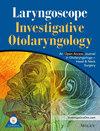Sinonasal Sarcoidosis: A Scoping Review of Demographics, Clinical Presentation, and Outcomes
Abstract
Objective
Sarcoidosis can involve the head and neck and, in particular, the sinonasal tract. We aim to review the presentation, treatment, and outcomes of sinonasal sarcoidosis.
Methods
A PRISMA-ScR-guided scoping review was performed utilizing PubMed, Web of Science, Embase, and SCOPUS to identify case reports describing sarcoidosis in the sinonasal tract. Two reviewers reviewed each article and extracted data. Exclusion criteria consisted of reviews, book chapters, non-English studies, basic science studies, and animal studies. The following data were extracted: patient demographics, symptoms and duration, biopsy status, angiotensinogen converting enzyme level, imaging, treatment, and outcomes.
Results
A total of 54 articles (1959–2023) met inclusion criteria, for a total of 103 cases. Median age at diagnosis was 40 years old (18–80 years old). 64% (N = 67) of patients were female. Most patients were Black (N = 31, 30%). The most common presenting symptom was nasal obstruction (N = 54, 50%). 73% (N = 75) of patients received steroid treatment. 38% (N = 39) received surgery, the most common procedure being endoscopic sinus surgery (32%, N = 33). Following treatment, 56% (N = 58) of patients had symptomatic improvement, and 16% (N = 17) had no change in symptoms or disease.
Conclusion
Sinonasal sarcoidosis predominantly affects female patients with or without a history of systemic sarcoidosis who present with prolonged nasal obstruction. Most patients have symptomatic improvement with conservative management; however, a select subset of patients may respond well to surgical management. Further investigation into the workup, indications for surgical intervention, and treatment algorithm is warranted to reduce disease morbidity.
Level of Evidence
NA.

 求助内容:
求助内容: 应助结果提醒方式:
应助结果提醒方式:


